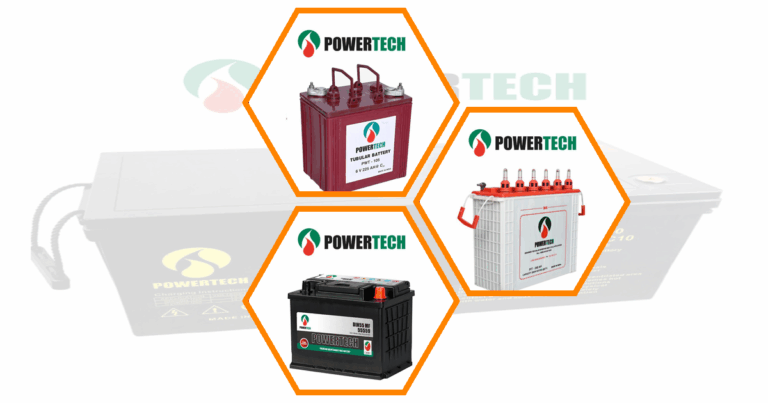In the rapidly evolving world of modern vehicles, the importance of battery management systems (BMS) and energy efficiency cannot be overstated. As electric vehicles (EVs) become more prevalent, understanding how BMS contributes to energy efficiency is crucial for both manufacturers and consumers. This article delves into the various aspects of BMS, highlighting its significance in enhancing vehicle performance, safety, and sustainability.
Battery Management Systems (BMS)
A Battery Management System (BMS) is an electronic system that manages a rechargeable battery, ensuring its optimal performance and longevity. The core functions of a BMS include monitoring the battery’s state, calculating secondary data, reporting that data, controlling the environment, and balancing the cells. By performing these functions, a BMS ensures that the battery operates within safe limits, thereby enhancing its efficiency and lifespan.
- Monitoring Battery State: Keeps track of voltage, current, and temperature.
- Calculating Secondary Data: Estimates state of charge (SoC) and state of health (SoH).
- Reporting Data: Provides real-time information to the vehicle’s control system.
- Controlling Environment: Manages thermal conditions to prevent overheating.
- Balancing Cells: Ensures uniform charge distribution across all cells.
Key Components of a BMS
The key components of a BMS include sensors, a control unit, and communication interfaces. Sensors are responsible for collecting data on voltage, current, and temperature. The control unit processes this data to make decisions about charging and discharging. Communication interfaces allow the BMS to interact with other vehicle systems, ensuring seamless operation.
- Sensors: Measure critical parameters like voltage and temperature.
- Control Unit: Processes data and makes operational decisions.
- Communication Interfaces: Enable data exchange with other systems.
Evolution of BMS Technology
BMS technology has evolved significantly over the years, driven by advancements in electronics and software. Early BMS designs were simple, focusing primarily on basic monitoring functions. Today, modern BMS solutions incorporate sophisticated algorithms and connectivity features, allowing for real-time data analysis and remote diagnostics.
- Early Designs: Focused on basic monitoring and protection.
- Modern Solutions: Include advanced algorithms and connectivity.
- Future Trends: Emphasize AI integration and predictive analytics.
How BMS Enhances Energy Efficiency in Electric Vehicles
Optimizing Battery Performance
BMS plays a pivotal role in optimizing battery performance by ensuring that each cell operates within its optimal range. This not only maximizes the energy output but also prevents damage caused by overcharging or deep discharging. By maintaining the battery’s health, BMS contributes to improved energy efficiency and vehicle performance.
- Cell Monitoring: Ensures optimal operation of each cell.
- Energy Output Maximization: Prevents overcharging and deep discharging.
- Performance Enhancement: Leads to better vehicle efficiency.
Extending Battery Life and Range
One of the primary benefits of a BMS is its ability to extend the battery’s life and range. By managing the charging and discharging cycles effectively, a BMS reduces wear and tear on the battery, thereby prolonging its lifespan. This results in fewer replacements and lower costs for EV owners.
- Cycle Management: Reduces wear and tear on the battery.
- Longevity Enhancement: Prolongs battery lifespan.
- Cost Reduction: Minimizes replacement needs.
Real-time Monitoring and Diagnostics
Real-time monitoring and diagnostics are essential features of a BMS, providing valuable insights into the battery’s condition. This allows for timely interventions in case of anomalies, preventing potential failures and ensuring consistent performance.
- Condition Insights: Provides real-time data on battery health.
- Anomaly Detection: Allows for timely interventions.
- Failure Prevention: Ensures consistent performance.
The Role of BMS in Safety and Reliability
Thermal Management and Overcharge Protection
Thermal management is a critical aspect of BMS, as excessive heat can lead to battery degradation or even failure. A BMS monitors temperature levels and activates cooling mechanisms when necessary. Additionally, overcharge protection prevents excessive voltage from damaging the battery.
- Temperature Monitoring: Prevents overheating and degradation.
- Cooling Activation: Engages cooling systems when needed.
- Voltage Regulation: Protects against overcharging.
Cell Balancing and Voltage Regulation
Cell balancing ensures that all cells within a battery pack maintain the same charge level, preventing imbalances that can lead to reduced performance or damage. Voltage regulation further ensures that each cell operates within safe limits, enhancing the battery’s reliability.
- Charge Uniformity: Maintains equal charge levels across cells.
- Performance Preservation: Prevents imbalances and damage.
- Safety Assurance: Ensures safe voltage levels.
Fault Detection and Mitigation
A BMS is equipped with fault detection capabilities that identify potential issues before they escalate. By diagnosing faults early, the BMS can initiate corrective actions, mitigating risks and enhancing the vehicle’s reliability.
- Issue Identification: Detects potential faults early.
- Corrective Actions: Initiates measures to address issues.
- Risk Mitigation: Enhances vehicle reliability.
BMS and Smart Energy Management Strategies
Adaptive Charging Algorithms
Adaptive charging algorithms are integral to BMS, allowing for intelligent charging based on the battery’s condition and usage patterns. This not only optimizes charging efficiency but also extends the battery’s lifespan.
- Intelligent Charging: Adapts to battery condition and usage.
- Efficiency Optimization: Enhances charging efficiency.
- Lifespan Extension: Prolongs battery life.
Regenerative Braking Integration
Regenerative braking is a key feature in EVs, and BMS plays a crucial role in its integration. By capturing and storing energy during braking, the BMS enhances energy efficiency and extends the vehicle’s range.
- Energy Capture: Stores energy during braking.
- Efficiency Enhancement: Improves overall energy efficiency.
- Range Extension: Increases vehicle range.
Power Distribution Optimization
BMS optimizes power distribution within the vehicle, ensuring that energy is allocated efficiently to various systems. This not only enhances performance but also reduces energy wastage.
- Energy Allocation: Distributes power efficiently.
- Performance Enhancement: Improves vehicle performance.
- Waste Reduction: Minimizes energy wastage.
Advancements in BMS Technology for Improved Efficiency
AI and Machine Learning Integration
The integration of AI and machine learning in BMS technology has revolutionized battery management. These technologies enable predictive analytics, allowing for more accurate forecasting of battery performance and maintenance needs.
- Predictive Analytics: Forecasts battery performance accurately.
- Maintenance Needs: Identifies potential issues early.
- Efficiency Improvement: Enhances overall efficiency.
Cloud-connected BMS Solutions
Cloud connectivity in BMS allows for remote monitoring and diagnostics, providing real-time insights into battery performance. This facilitates proactive maintenance and enhances the vehicle’s reliability.
- Remote Monitoring: Provides real-time performance insights.
- Proactive Maintenance: Enables timely interventions.
- Reliability Enhancement: Improves vehicle reliability.
Predictive Maintenance Capabilities
Predictive maintenance capabilities in BMS help identify potential issues before they become critical. By analyzing data trends, the BMS can schedule maintenance activities, reducing downtime and costs.
- Issue Identification: Detects potential problems early.
- Scheduled Maintenance: Plans maintenance activities.
- Cost Reduction: Minimizes downtime and expenses.
The Impact of BMS on Overall Vehicle Performance
Enhancing Acceleration and Top Speed
BMS contributes to enhancing a vehicle’s acceleration and top speed by optimizing power delivery from the battery. This ensures that the vehicle can achieve its maximum performance potential without compromising safety or efficiency.
- Power Optimization: Enhances acceleration capabilities.
- Performance Potential: Achieves maximum speed safely.
- Efficiency Maintenance: Balances performance and safety.
Improving Energy Consumption Metrics
By optimizing energy usage, BMS improves a vehicle’s energy consumption metrics. This results in better fuel economy for hybrid vehicles and extended range for electric vehicles, making them more cost-effective and environmentally friendly.
- Usage Optimization: Enhances energy consumption efficiency.
- Fuel Economy: Improves metrics for hybrid vehicles.
- Range Extension: Increases range for electric vehicles.
Optimizing Vehicle Weight and Design
BMS plays a role in optimizing vehicle weight and design by allowing for more efficient battery packaging. This contributes to better aerodynamics and overall vehicle performance, enhancing both efficiency and aesthetics.
- Efficient Packaging: Optimizes battery placement.
- Aerodynamic Improvement: Enhances vehicle design.
- Performance Enhancement: Improves overall efficiency.
BMS Integration with Other Vehicle Systems
Connectivity with Powertrain Control Modules
BMS integrates seamlessly with powertrain control modules, ensuring coordinated operation between the battery and the vehicle’s propulsion system. This enhances performance and efficiency while reducing emissions.
- Seamless Integration: Coordinates with powertrain systems.
- Performance Enhancement: Improves propulsion efficiency.
- Emission Reduction: Lowers vehicle emissions.
Interfacing with Charging Infrastructure
BMS interfaces with charging infrastructure to optimize charging processes. This ensures that the battery is charged efficiently and safely, reducing charging times and enhancing convenience for users.
- Process Optimization: Enhances charging efficiency.
- Safety Assurance: Ensures safe charging practices.
- Convenience Enhancement: Reduces charging times.
Data Sharing for Holistic Vehicle Management
BMS facilitates data sharing with other vehicle systems, enabling holistic management of the vehicle’s performance and maintenance. This ensures that all systems work in harmony, enhancing reliability and efficiency.
- Data Exchange: Shares information with other systems.
- Holistic Management: Coordinates vehicle performance.
- Reliability Enhancement: Improves overall efficiency.
BMS, and Energy Efficiency in Grid Applications
Stabilizing Renewable Energy Integration
BMS plays a crucial role in stabilizing the integration of renewable energy sources into the grid. By managing energy storage systems, BMS ensures a consistent supply of power, even when renewable sources are intermittent.
- Energy Management: Stabilizes renewable integration.
- Supply Consistency: Ensures reliable power supply.
- Intermittency Mitigation: Addresses renewable variability.
Enhancing Grid Resilience and Reliability
BMS enhances grid resilience and reliability by providing backup power during outages and peak demand periods. This ensures a stable power supply, reducing the risk of blackouts and enhancing grid performance.
- Backup Power: Provides energy during outages.
- Demand Management: Supports peak demand periods.
- Performance Enhancement: Improves grid reliability.
Facilitating Demand Response Programs
BMS facilitates demand response programs by managing energy storage and distribution. This allows for more efficient use of energy resources, reducing costs and enhancing grid efficiency.
- Resource Management: Optimizes energy distribution.
- Cost Reduction: Lowers energy expenses.
- Efficiency Enhancement: Improves grid performance.
Economic Benefits of Advanced BMS Implementation
Reducing Total Cost of Ownership
Advanced BMS implementation reduces the total cost of ownership for EVs by extending battery life and improving energy efficiency. This results in lower maintenance costs and fewer replacements, making EVs more affordable in the long run.
- Cost Reduction: Lowers ownership expenses.
- Efficiency Improvement: Enhances energy usage.
- Affordability Enhancement: Makes EVs more economical.
Increasing Battery Longevity and Resale Value
By extending battery longevity, BMS increases the resale value of EVs. A well-maintained battery is a valuable asset, attracting higher resale prices and providing better returns for owners.
- Longevity Extension: Prolongs battery life.
- Value Enhancement: Increases resale potential.
- Return Improvement: Provides better financial returns.
Minimizing Warranty Claims and Recalls
Effective BMS implementation minimizes warranty claims and recalls by ensuring the battery operates within safe limits. This reduces the likelihood of failures and enhances customer satisfaction.
- Claim Reduction: Lowers warranty issues.
- Failure Prevention: Ensures safe operation.
- Satisfaction Enhancement: Improves customer experience.
The Importance of Battery Management Systems
Enabling Vehicle-to-Grid (V2G) Technology
BMS is essential for enabling vehicle-to-grid (V2G) technology, which allows EVs to supply power back to the grid. This enhances grid stability and provides additional revenue streams for EV owners.
- Grid Interaction: Enables power supply to the grid.
- Stability Enhancement: Supports grid stability.
- Revenue Generation: Provides financial benefits.
Supporting Autonomous Driving Capabilities
BMS supports autonomous driving capabilities by ensuring reliable power supply to critical systems. This enhances the safety and performance of autonomous vehicles, paving the way for future mobility solutions.
- Power Reliability: Ensures consistent energy supply.
- Safety Enhancement: Supports autonomous systems.
- Performance Improvement: Enhances vehicle capabilities.
Facilitating Battery Swapping and Fast Charging
BMS facilitates battery swapping and fast charging by managing energy flow and ensuring safe operation. This reduces downtime and enhances convenience for EV users, supporting the transition to electric mobility. EV battery selection is about picking the right battery for electric cars It helps make sure the car can go far and charge quickly Battery charging problems can make your device stop working
Automotive electrification breakthrough makes cars run on electricity instead of gas This helps cars pollute less and go farther without needing to refuel Vehicle power optimization helps cars use less fuel and go farther It makes engines work better so vehicles can be more efficient
- Energy Management: Optimizes energy flow.
- Operation Safety: Ensures safe charging practices.
- Convenience Enhancement: Reduces downtime.
Challenges and Opportunities in BMS Development
Standardization and Interoperability Issues
Standardization and interoperability are significant challenges in BMS development. Ensuring compatibility across different systems and manufacturers is crucial for seamless integration and operation.
- Compatibility Assurance: Ensures system interoperability.
- Integration Enhancement: Supports seamless operation.
- Development Challenge: Addresses standardization issues.
Cybersecurity Considerations
Cybersecurity is a critical consideration in BMS development, as connected systems are vulnerable to cyber threats. Implementing robust security measures is essential to protect data and ensure safe operation.
- Threat Mitigation: Protects against cyber risks.
- Data Security: Ensures information safety.
- Operational Safety: Maintains secure operation.
Scaling BMS for Larger Battery Packs
Scaling BMS for larger battery packs presents both challenges and opportunities. As battery sizes increase, BMS must adapt to manage more cells and ensure efficient operation.
- Size Adaptation: Manages larger battery packs.
- Efficiency Maintenance: Ensures effective operation.
- Development Opportunity: Supports larger systems.
In conclusion, the importance of battery management systems, BMS, and energy efficiency in modern vehicles is undeniable. As technology continues to advance, BMS will play an increasingly vital role in enhancing vehicle performance, safety, and sustainability. By understanding and leveraging the capabilities of BMS, manufacturers and consumers can drive the future of mobility towards a more efficient and sustainable path.
FAQ’s
What are the key features of an efficient battery management system?
The key features of an efficient battery management system include real-time monitoring, cell balancing, and fault detection. These features ensure that the battery operates safely and efficiently, enhancing its performance and longevity. An efficient BMS also incorporates adaptive charging algorithms and connectivity features for seamless integration with other systems.
How does a battery management system improve energy efficiency?
A battery management system improves energy efficiency by optimizing the charging and discharging cycles of the battery. It ensures that energy is used effectively, reducing wastage and enhancing the vehicle’s range. By maintaining the battery’s health, a BMS also extends its lifespan, contributing to long-term efficiency.
What is the main purpose of a battery management system?
The main purpose of a battery management system is to ensure the safe and efficient operation of a battery. It achieves this by monitoring the battery’s state, managing charging and discharging cycles, and protecting against potential hazards. By doing so, a BMS enhances the battery’s performance, longevity, and safety.






